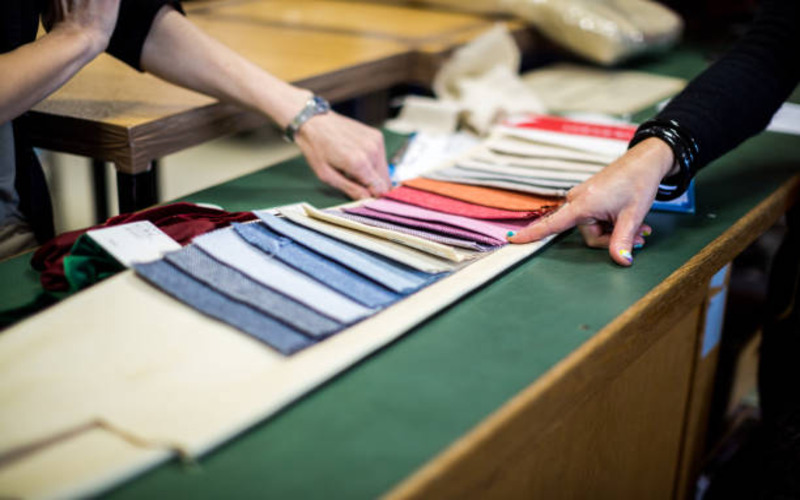Selecting the best uniform fabrics for various work environments is essential forfor ensuring that employees feel comfortable andand perform optimally in their roles. Uniforms are often a reflection of a company’s brand and values, so choosing the right fabric can significantly impact both employee satisfaction and public perception. From healthcare settings to industrial workplaces, each environment has unique requirements that dictate the most suitable materials.

When evaluating uniform fabrics, it’s crucial to consider several factors, including comfort, durability, ease of cleaning, and appropriateness for the specific work conditions. Additionally, colour and seasonal considerations play a vital role in fabric selection. By understanding the diverse needs of different work environments, employers can make informed decisions that enhance employee well-being and promote a professional appearance.
Here are some tips on how to select the best uniform fabrics for various work environments.
1.Comfort:
Comfort is one of the most important aspects to consider when selecting uniform fabrics. The fabric’s feel, drape, stiffness, and overall hand significantly affect how employees experience their uniforms throughout the workday. For instance, a soft, breathable fabric will help keep employees comfortable during long hours, especially in physically demanding jobs or warm environments. Fabrics like cotton and moisture-wicking blends are excellent choices for those seeking comfort. It is also important to consider the fit of the uniform, as a well-fitted garment can enhance comfort and allow for ease of movement.
2.Durability:
Durability is another critical factor when choosing uniform fabrics. Work environments can be demanding, and uniforms often face wear and tear due to regular use. Fabrics like polyester, canvas, and twill are known for their durability and ability to withstand rigorous activities. Selecting a fabric that maintains its integrity after repeated washes and exposure to various elements will save costs in the long run, as employees won’t need replacements as frequently. Additionally, considering the weight of the fabric can help assess its durability; heavier fabrics tend to be more robust and longer-lasting.
3.Ease of Cleaning:
In many work environments, uniforms are subject to spills, stains, and other messes. Therefore, ease of cleaning is a significant consideration when selecting fabric. Some fabrics, like polyester and treated cotton, are designed to repel stains and are easier to clean than others. Moreover, selecting fabrics that can withstand frequent washing and drying without losing their shape or color is essential. In industries such as healthcare and food service, where cleanliness is paramount, choosing fabrics that can be easily sanitized will help maintain a professional appearance.
4.Color:

The color of the uniform fabric should align with the company’s branding and image. It is important to consider whether the color will coordinate well with other items in the uniform, such as accessories or outerwear. Additionally, light colours may be suitable for industries that emphasize cleanliness and sterility, such as healthcare or food services. In contrast, darker colours may be better for environments prone to dirt and stains, as they tend to hide blemishes more effectively. Moreover, some industries may have specific color requirements based on safety regulations or brand identity, making color selection a vital aspect of the decision-making process.
5.Season:
Seasonality is another essential factor when selecting uniform fabrics. Different climates and weather conditions can significantly affect employee comfort and performance. For example, lightweight, breathable fabrics like cotton or moisture-wicking blends are ideal for warmer weather, as they allow for better air circulation and moisture evaporation. On the other hand, heavier fabrics, such as wool or thicker blends, are better suited for colder climates, providing warmth and insulation. Considering seasonal variations and selecting appropriate fabrics ensures that employees remain comfortable and functional throughout the year.
6.Work Environment:
Finally, the specific work environment should guide the fabric selection process. Understanding what employees will be doing in their uniforms is crucial for determining the most suitable fabric. For instance, jobs that involve physical activity or manual labor may require breathable, flexible materials that allow for a full range of motion. On the other hand, professional settings may prioritize a polished appearance with tailored fabrics that maintain their shape. Additionally, uniforms for hazardous environments may need specialized fabrics that offer protection from chemicals, flames, or extreme temperatures.
Conclusion
Selecting the best uniform fabrics for various work environments is a critical task that can enhance employee comfort and performance while reflecting a company’s brand identity. By considering factors such as comfort, durability, ease of cleaning, color, and seasonal appropriateness, businesses can ensure that their employees are well-equipped to meet the demands of their roles. The right fabric not only contributes to a professional appearance but also promotes satisfaction and productivity among staff.
Working with reputable uniforms suppliers and uniform companies can further streamline this process. These experts can provide valuable insights into the latest fabric technologies and trends, helping businesses make informed decisions that align with their specific needs. Ultimately, investing in high-quality fabrics for uniforms is an investment in the workforce, leading to a more cohesive and motivated team.

















